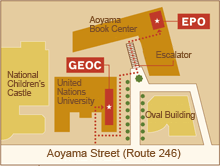Overview
IUCN and Holcim have been working together since 2007 to strengthen biodiversity management within Holcim’s operations and to contribute to sector-wide improvements in the cement and related sectors.
The major outcome of the IUCN-Holcim Phase I agreement (2007-2010) was the development of a Biodiversity Management System to guide the systematic integration of biodiversity considerations into Holcim’s cement and aggregate operations worldwide.
•The creation of an Independent Expert Panel (now the Biodiversity Advisory Panel) to provide independent input and advice on biodiversity issues to Holcim
•The development of an integrated Biodiversity Management System for Holcim
•Revised corporate policies and tools related to biodiversity/These achievements – together with ongoing work under the Phase II agreement and country-level partnerships around the world – provide an excellent model for how IUCN, and the wider environmental community, can engage in substantive cooperation with a large global cooperation.
In 2011, the two organizations renewed their collaboration for a further three years. Building on the achievements of the first agreement, the IUCN-Holcim Phase II agreement aims to:
•Effectively implement the Biodiversity Management System in Holcim operations
•Influence national policies and legal instruments to enable the building material sector to deliver better biodiversity conservation outcomes
•Influence the development of sector-wide standards for biodiversity conservation
•Strengthen Holcim’s approach to water management
Good cases in Sri Lanka
•One of the initiatives under this partnership is the project to rehabilitate the Aruwakkalu quarry site that has been degraded by the extraction of limestone for cement production. The project aims to restore the biodiversity and landscape values affected by the limestone mining operations in the Aruwakkalu quarry area, located about 25 km north of Puttalam town and bordering Portugal Bay and Wilpattu National Park
•Ecological survey was conducted within the Aruvakkalu quarry operation sites to understand its natural diversity
•Technical support to the construct artificial reef substrate near Unawatuna coral reef
•Habitat restoration activities in old quarry areas at the Aruvakkalu quarry site and established a monitoring protocol to measure the success of the restoration
•Ecological monitoring to assess the recovery of restored areas, and new sample plots were establish in newly restored areas
•Conduct an ecological assessment of areas identified for next year quarry operations, and rescue/release of less mobile species for the mining area identified for the next year
•Except above propgrammes, technical support was given time to time when HOLCIM Lanka need IUCN assistant in the environment conservation planning
•Awareness programme also carried out for the quarry staff to enrich their environmental knowledge
Points about the partnership
Given its leadership in sustainable development within these industries, Holcim was a logical partner for IUCN – not only to build on Holcim’s previous biodiversity approach but also as part of a broader effort to influence the entire sector.
Category
□Planning □Cooperative policy
Theme
□Biodiversity/nature conservation
Actor
IUCN
Holcim
Partners
Member states and NGOs of IUCN

















